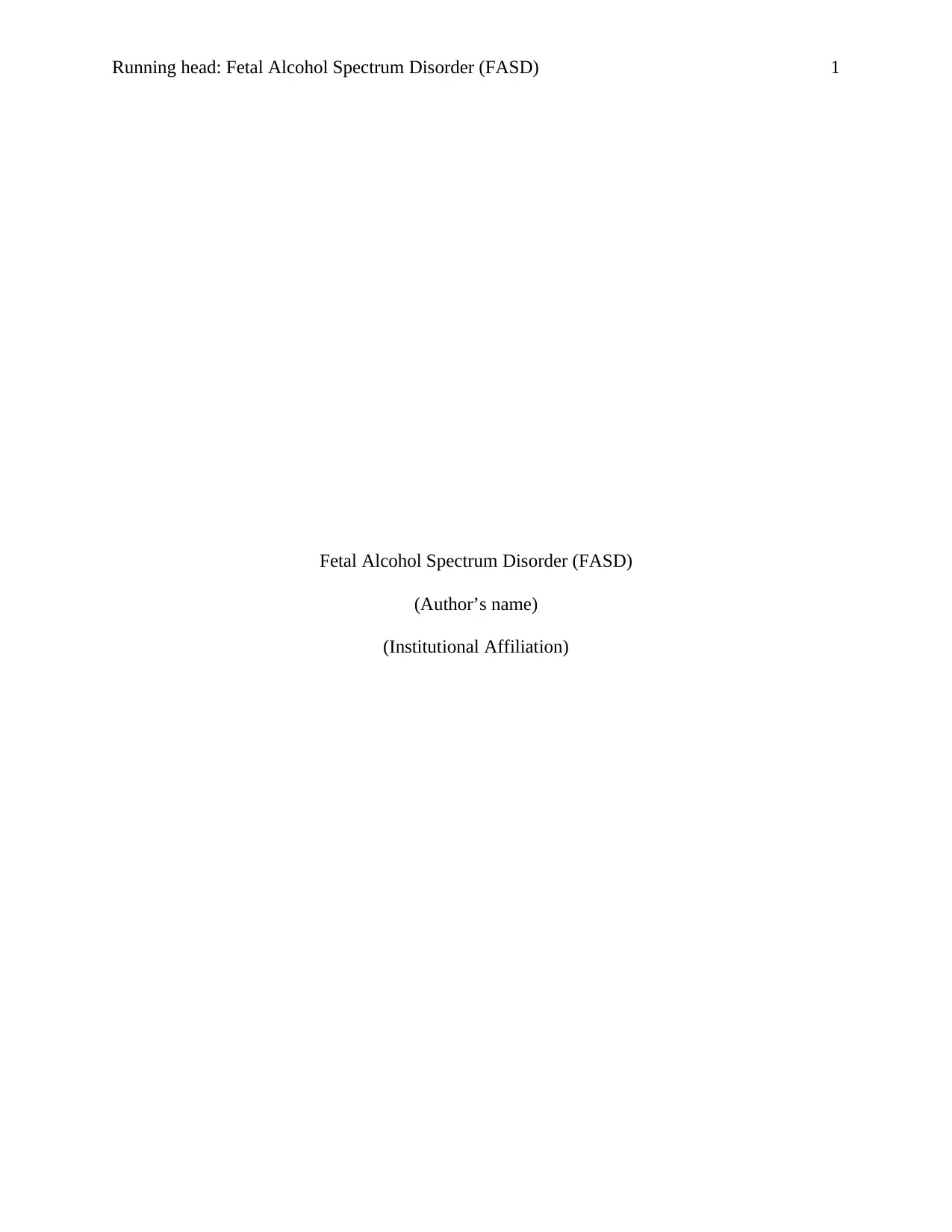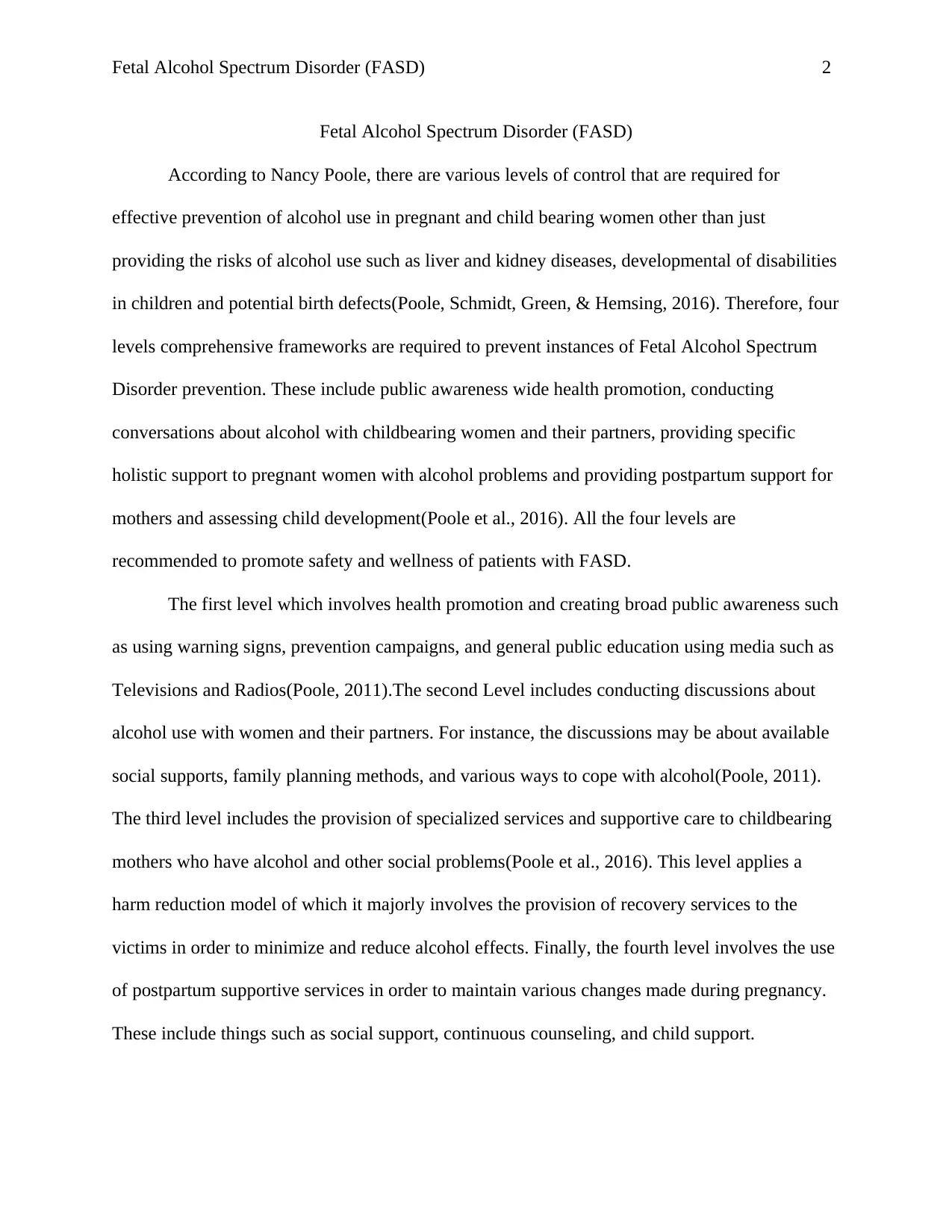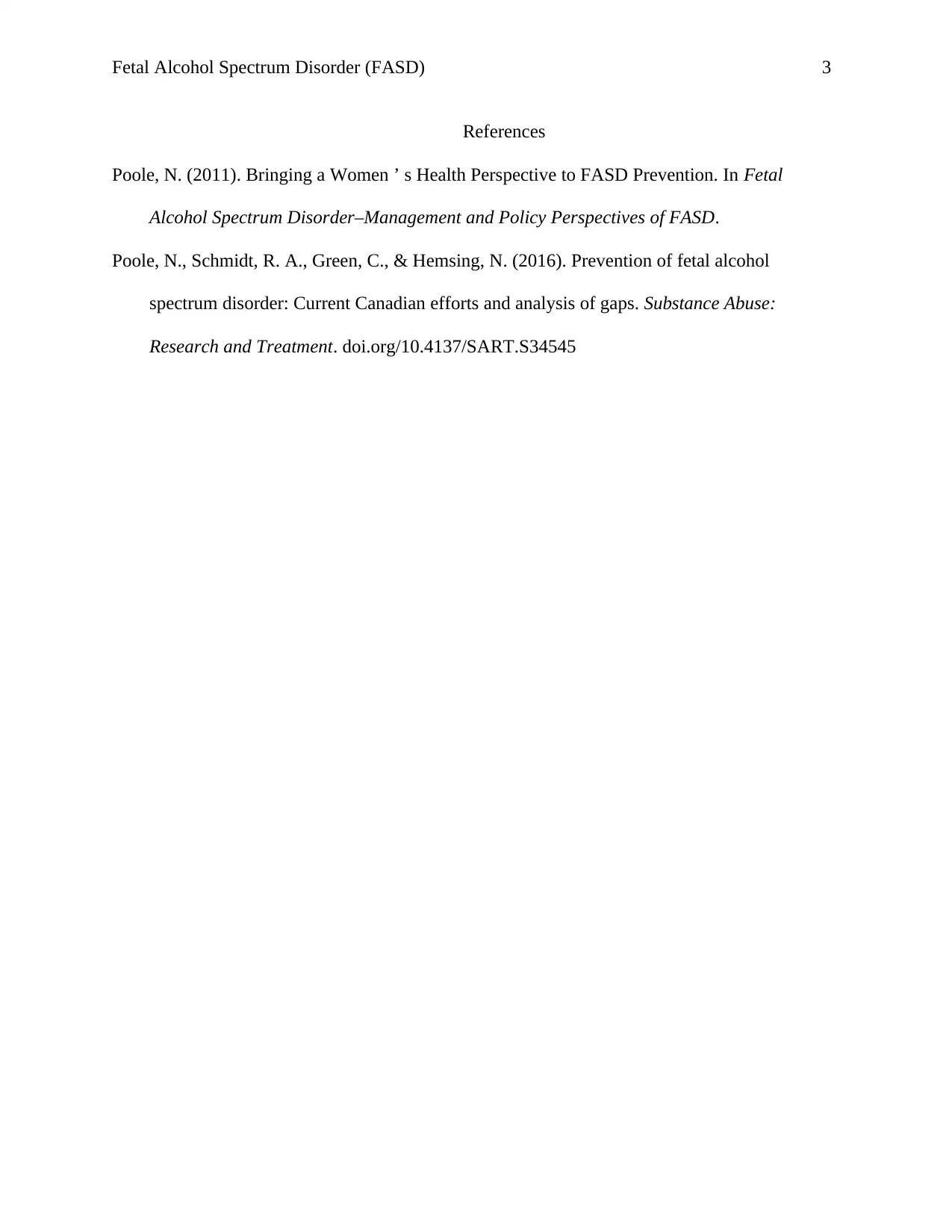Analyzing Effective Prevention Frameworks for Fetal Alcohol Disorder
VerifiedAdded on 2023/04/06
|3
|363
|292
Essay
AI Summary
This essay discusses the comprehensive prevention strategies for Fetal Alcohol Spectrum Disorder (FASD) as outlined by Nancy Poole, emphasizing that effective prevention requires more than just educating about the risks of alcohol use. The essay details four levels of prevention: broad public awareness and health promotion through campaigns and education; conducting discussions with women and their partners about alcohol use, social supports, and family planning; providing specialized services and supportive care, applying a harm reduction model; and offering postpartum supportive services to maintain changes made during pregnancy, including social support and counseling. The ultimate goal of these strategies is to promote the safety and wellness of patients with FASD.
1 out of 3









![[object Object]](/_next/static/media/star-bottom.7253800d.svg)